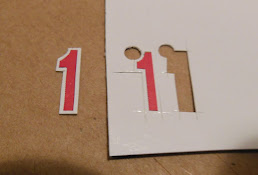Here we go again -
The
TOP TEN builds of 2024! These are personal preferences, you may not agree with my choices.
Picks are based on
design, engineering, instructions and construction.
Click on the model names to go to the builds.
Searching builds like the Great Goblin might bring up every post where the word "Goblin" was mentioned. Scroll down to find the kit build you want, then to the bottom of that post and click on the Label "E Great Goblin". That will focus on the individual build, in reverse order from finished model to start.
You can
SEARCH "Top 10" to see builds from previous years.
A mini engine clone from the 1970s Estes Mini Brute line. It was fun looking back on the Mini Brutes I owned as a teen.
A large scale tribute to the original Model Missiles Aerobee Hi model rocket.
While not a true scale model, it captures the spirit of the first model rocket kit design.
A rebuild of a carded MMX rocket. This was one I've wanted to draw-up and build for quite some time.
This was a show build for Estes and is now on display in Penrose.
Interesting built-up fins.
6. Enerjet by Aerotech
INITIATOR
Sorry, there is not a full blog build for this one -
I built five of these for Aerotech, three flight and two show versions. It's a great introduction into mid-power rocketry. I found it hard to match the red nose cone paint to the red ink on the stickers.
The rest of the Top 10 tomorrow!



















































